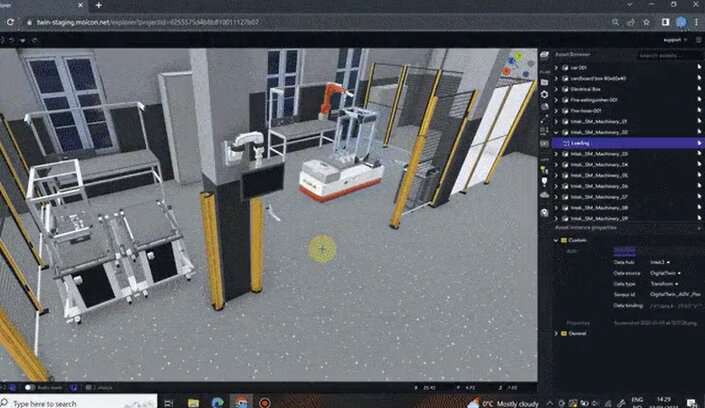Credit: Manufacturing Technology Norwegian Catapult test center (MTNC)
From just one screen, SINTEF engineers are now able to run trials using a digital twin of a real production facility. They will soon be able to see whether planned changes have the desired effect.
It sounds like science fiction. But at SINTEF, science fiction is becoming reality.
In the video below, the first thing you see is a robot moving through the institute's advanced physical production cell. The cell is a kind of "lab factory" that enables automation of anything from the assembly of vehicle parts to the connection of pipe and electronic components.
Then there appears a virtual version of the same robot repeating the same operation in a virtual copy of the same laboratory.
The images on the screen make up the visualization component of the recently developed "digital twin" technology. It will eventually be possible, from just one screen, to use trial and error to achieve an efficient production facility before the real factory has even been built.
This is the visualisation component of the recently developed 'digital twin' technology. It will be possible, from just one screen, to use trial and error to achieve an efficient production facility before the real factory has even been built.
Revealing problems in advance
"It is much cheaper to make errors on a screen than to have to manage them after a facility has been completed as a physical entity," explains researcher Torbjørn Langedahl Leirmo.
The visualization system will make it possible to test planned production facility designs and process pathways before the real facilities are finally built. It will enable engineers to find out in advance, for example, whether planned robots will collide with physical obstacles. Or whether they will have to make inefficient and time-consuming additional maneuvers in order to avoid such collisions.
When physical equipment is installed in the completed facilities, it can all be connected to the digital twin. The continuous extraction of information about what is taking place can be used to predict how the processes will develop over time. In this way, data from real production situations can be used to obtain new knowledge and insight into the processes.
Packed with algorithms
The images we see on screen make up just the "surface" of the digital twin of which they are a part.
"Embedded in the system are algorithms that will put the real robots in positions to learn from both historical data and real-time information," says Langedahl Leirmo. "This will offer opportunities for cost savings, reduced energy consumption and lower levels of scrap production, which in turn will reduce our consumption of valuable materials," he says.
The digital twin project is owned by the so-called Manufacturing Technology Norwegian Catapult test center (MTNC). As well as SINTEF Manufacturing, the companies Intek and Moicon have also made contributions to the project.
Provided by Norwegian University of Science and Technology
























